#33: We're Here, We're Queer, Get Used to It! (Part 2)
Presenting: Fun With Flags (not starring Sheldon Cooper)
Flags, Flags, Lots of Flags
I learned a new term today: vexillology.
Apparently, vexillology is the scientific study of the history, symbolism and usage of flags or, by extension, any interest in flags in general. In fact, the North American Vexillogical Association was founded in 1967 and remains the largest of its kind of association in the world. If I understand correctly, the term comes the Latin “vexillum,” referring to the banners carried by Roman soldiers, and “logia,” meaning knowledge or study in Greek. American vexillologist Whitney Smith coined the term in the late 1950s.
I had no idea that vexillology was a “thing,” but now I’m strangely fascinated. Most of us are familar with heraldry, but, if you’re like me, you’ve never stopped long enough to consider whether the study of flags was a branch of heraldry writ large.
SIDEBAR » Frankly, I hadn’t given flags much thought since catching a couple episode of “Sheldon Cooper Presents: Fun With Flags” on Big Bang Theory. They were hilarious, if you think Sheldon Cooper was hilarious. Obviously, I never agreed with the premise of the show, but could “suspend disbelief” long enough to crack up at the most clever anti-social on-screen characters since Kramer on Seinfeld.
That said, I’m not sure that I’ll be developing my vexillogical skills beyond this post, but it was fun while it lasted!
The Pride Flag
Speaking of flags, the pride flag, originally named the gay pride flag, is a controversial symbol in American culture; it represents “all the genders and identities” to some, and misapproriation and blasphemy by others, especially those who believe the Bible is true and trustworthy.
SIDEBAR » Genesis 9:8-17 introduces God’s promise to never destroy the earth by water again. Known as the Noahic covenant, God’s promises had three features: (1) it was unconditional, meaning it was based on God’s promise alone, wholly independent on man’s efforts; (2) it was made to Noah, his descendants, and every living creature on the earth; and (3) it was sealed with a sign, the rainbow, to remind us of His promise, His faithfulness and His grace.
Regardless of one’s opinion, the pride flag has been part of our culture for 45 years. In this post, we’ll simply trace its development and visual evolution, without engaging the normative issues.
With that, let’s look at the flag’s history … Does that mean we’re engaging in vexillology??
—
The original pride flag was created in San Francisco in 1977. It was first flown publicy the following year. Today, there are approximately 51 variations of the pride flag, three of which are quite well-known and a fourth is gaining recognition:
the Gilbert Baker Gay Pride Flag,
the Updated Pride Flag,
the Progress Pride Flag, and
the Intersex-Inclusive Flag.
Let’s consider each in turn.
» Gilbert Baker Gay Pride Flag 1977
The image above is a representation of the original pride flag, which was created by Gilbert Baker at the request of Harvey Milk, an openly-gay San Francisco politician and hero of the LGBT movement. You may recall that Milk was also the subject of the 2008 eponymous film, starring Sean Penn in the leading role.
Milk asked Baker, also an openly gay man, to devise a symbol of pride for the gay community. Baker settled on a flag given that flags are generally understood as powerful symbols of pride in something: pride of country, pride of place, pride of a people.
Baker was initially inspired by the US national flag (stripes) and the literal rainbow (spectrum of colors) since, according to him, it stood for representation and unity. His first flag included eight colors, each with an assigned meaning to highlight a particular feature of the gay community.
PINK for sex
RED for life
ORANGE for healing
YELLOW for the sun
GREEN for nature
TURQUOISE for art and magic
BLUE for serenity
PURPLE for the spirit
Baker’s handsewn flag first flew at the San Francisco United Nations Plaza for Gay Pride Day on June 25, 1978. It is always flown horizontally with the red stripe on top in order to reflect the color order in a real rainbow.
SIDEBAR» Five months later. on November 27, 1987, Milk was assasinated in his office inside the San Francisco City Hall by a former colleague on the San Francisco Board of Advisors. SF mayor George Moscone was killed alongside Milk. Dianne Feinstein, then President of the Board of Supervisors, was elected mayor a week later, a position she held for 10 years. After an unsuccessful run for governor of California, she ran for the U.S. Senate in 1992 and won. She was a Senator until her death in 2023.

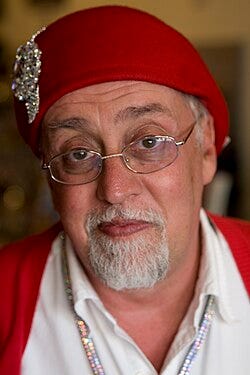
Back to the flag …
Gilbert Baker later explained his choice of the rainbow motif:
“What I liked about the symbolism of the rainbow is that it fits us. It’s all the colors. It represents all genders. It represents all the races. It’s the rainbow of humanity.”
FWIW, there is also a 9 color version of the flag (see above) created by Baker in 2017. He added lavendar as a ninth color to his original eight to symbolize diversity in response to Trump’s election the year before. The color lavendar has great significance in LGB history, gaining fame after Betty Friedan referred to lesbians as the “lavendar menace” to the feminist movement around 1969. Apparently, Friedan referenced lavendar because it was a common color for women’s clothing at the time. This flag isn’t mass produced.
» Updated Gay Pride Flag 1978-79
As explained above, Harvey Milk was assassinated mere months after the flag was first flown at the SF Gay Freedom Day Parade. To celebrate his life, the flag was flown all across the city which significantly raised its profile.
Immediately thereafter, public demand for the rainbow flag soared, so Baker began to mass produce it in partnership with a local flag company. But reproducing the eight-color flag at scale was challenging. It was difficult to get hot pink fabric and the number of colors increased costs. To keep up with orders, Baker began manufacturing a seven-color flag instead.
A year after this change, in 1979, the flag was simplified once more to a six-color design, removing the turquoise and indigo stripes and replacing them with a single blue one. Having an odd number of stripes made it difficult to split the flag for decorating floats in pride parades, hence the shift to an even number. The six-color flag remains the most well-known of the various pride flags today.
» Progress Pride Flag 2019
In 2018, non-binary American artist Daniel Quasar redesigned the six-color flag design to include elements of the the transgender flag, which was created by Monica Helms in 1999, and the 2017 Philadelphia City Hall Pride flag.
The Transgender, Philadelphia, and “First Draft” of the Pride Progress Flag


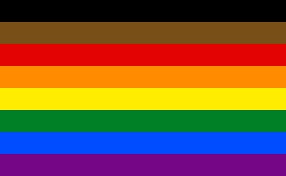
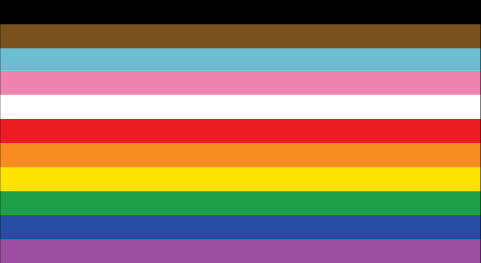
The picture in the upper left corner of the aollage is of Monica (formely Michael) Helms, designer of the transgender flag, which is featured to the right. The blue, pink, and white stripes stand for trans-male, trans-female, and non-binary individuals, respectively.
In the bottom left corner is the 2017 Philadelphia flag, which added brown and black stripes to the existing pride flag in order to highlight LGBT-identifying people of color (POC) and the racial discrimination they experience inside the community. The black stripe has a double meaning as it also represents HIV+ people and those who’ve previously passed from the disease.
Daniel Quasar wasn’t the first to create an updated flag incorporating the transgender and Philadelphia flags. The City of Seattle took a stab at it, also in 2018, which you can see in the bottom right corner. The result was an 11-stripe flag, adding five new colors on top of the six in the standard pride flag. However, the design was heavily criticized as being clunky, illegible, and, most importantly, disrespectful to the LGB community as it subordinated their rainbow colors to the transgender and POC colors.
In response to Seattle’s design debacle, Quasar created a revised flag “by placing the black, brown, light blue, pink and white stripes in the shape of an arrow, on the left of the progress pride flag. This solution not only sought to improve the flag's legibility, but also placed discriminated minorities at the forefront.”
Quasar described the new flag this way: "The arrow points to the right to show forward movement […] and illustrates that progress [towards inclusivity] still needs to be made".

There’s still one more recent update. This is the fourth design that’s gaining some traction.
» The Intersex-Inclusive Pride Flag

This most recent iteration of the pride flag was created in 2021 by Valentino Vecchitti, an intersex campaigner, artist, and diversity speaker. Vecchitti incorporated the intersex pride flag designed by Morgan Carpenter in 2013 (below) into Quasar’s pride progress flag to include additonal sexual orientations such as asexual and aromantic.
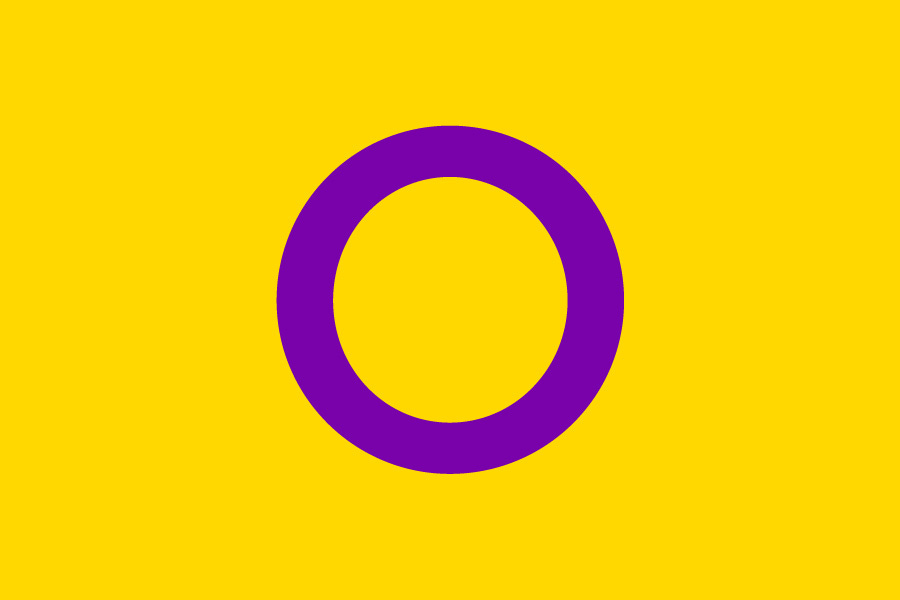
According to the Global Inclusive Pride Flag’s website, the intersex inclusive flag “represent[s] ersons with: diverse sexual orientations; diverse gender identities and expressions, and those with diverse sex characteristics. Diverse sex characteristics refers to the intersex community. Sex characteristics is a new category not previously included in our global pride flag.”
Below are pictures of Mark Carpenter (L) and Valentino Vecchitti (R), who identifies as a female.
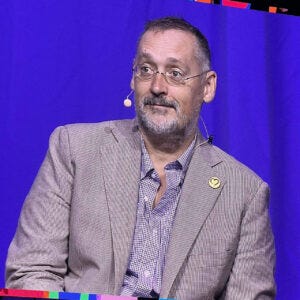

As noted above, there are many different flags representing many different “identities,” but the four highlighted above are the most well-known, at least in my experience and based on my research.
Some Closing Thoughts
The pride flag was first known as the gay pray flag, representing the gay community writ large. Per an interesting article on HistoryNewsNetwork.org, initially everyone was either straight or gay, whether male or female.
At some point, the term gay started to refer to homosexual men, so the use of lesbian to refer to homosexual women became common. Hence, the community became known as the gay and lesbian community. Next, the bisexuals, per the article the “part-time gays,” wanted in, so, depsite protest, the community was renamed again to the GBL or LGB community. The gay, lesbian, bisexual community at that time was not inclusive of transgender identifying people or those with alternate gender identies. The LBG movement recognized the sex-binary and was an entirely different ball of wax from the transgender world. As others have said, being L,G, or B is a hardware issue; being T (and later Q etc.) is a software issue. Nonetheless, by the late 1990s, some folks in the LGB community began to add the T and then the Q … that’s when things started to get tricky, particularly on the civil rights front. It also made the movement internally inconsistent given the underlying premises of homosexuality, transgenderism, and queer theory - they’re not logical friends, nor are they friends in real life. LGBTQIA23+ is a fictional moniker used for political activism.
That’s a wrap of “Fun With Flags.” I’m officially moving on from vexillology, in part because I can hardly pronounce it! LOL ..
Stay tuned for an “interesting” story on Pride Month, and not just why it’s in June! I’ll give you hint … think “proclamation.”
—
Thank you, as always for reading and for supporting my work. It matters to me more than you know!
xo,
Kelley
June 12, 2025








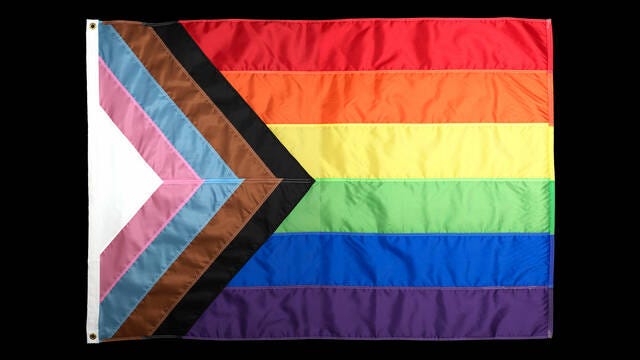
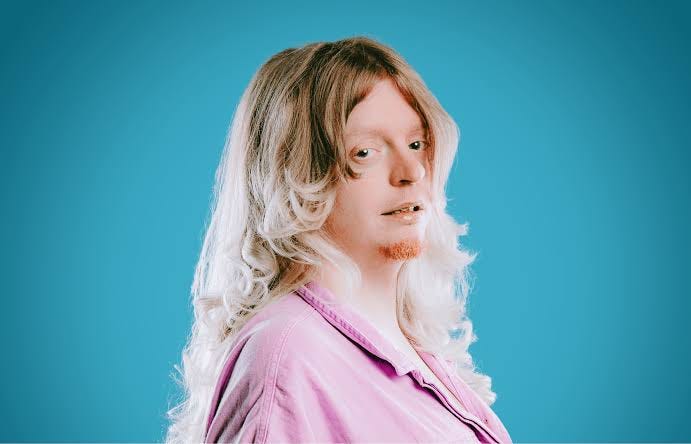
This was fun!
I now no much more about vexillology than I did yesterday. Nicely done.